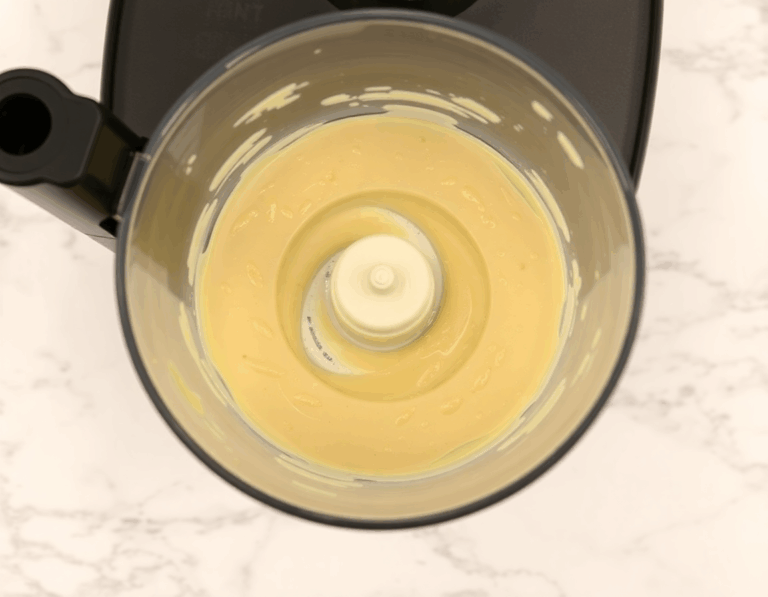For me, hummus is that creamy, dreamy concoction that transports you to sunny Mediterranean shores with just one bite – it’s like a vacation for your taste buds. I remember stumbling upon a quaint little café in Santorini, where the hummus was so velvety and rich, it almost felt like a warm hug from an old friend. Since then, I’ve been on a quest to recreate that perfect blend of flavors at home, and I think I might have cracked the code.
Cookbook Inspiration
For those interested in exploring more Mediterranean dips and spreads, a dedicated cookbook can offer additional inspiration and techniques.
Steps
- Begin by combining tahini and freshly squeezed lemon juice in a food processor. Blend the mixture for about a minute, then scrape down the sides and blend for another 30 seconds to achieve a whipped and creamy consistency.
- Add olive oil, minced garlic, cumin, and a bit of salt to the whipped tahini and lemon mixture. Blend for 30 seconds, then scrape the sides again and blend for an additional 30 seconds until well-mixed.
- After draining the chickpeas, add half of them to the processor and blend for a minute. Scrape the sides, add the rest of the chickpeas, and continue processing until the mixture is thick and mostly smooth, which should take 1 to 2 minutes.
- To adjust the thickness of the hummus, gradually pour in 2 to 3 tablespoons of cold water or aquafaba while the processor runs until you reach your desired texture.
- Taste the hummus and make any necessary seasoning adjustments. Serve with a drizzle of olive oil and a sprinkle of paprika, sumac, or Za’atar for extra flavor.
- Store the hummus in an airtight container in the refrigerator for up to a week. For longer storage, freeze it with a thin layer of olive oil on top for up to a month.
Ingredients
- 1 (15 oz) can chickpeas, drained or 1 ½ cups (250g) cooked chickpeas
- 1/4 cup (60ml) fresh lemon juice, from 1 large lemon
- 1/4 cup (60ml) well-stirred tahini
- 1 small garlic clove, minced
- 2 tablespoons (30ml) extra-virgin olive oil, plus extra for serving
- 1/2 teaspoon ground cumin
- Salt to taste
- 2 to 3 tablespoons (30-45ml) cold water or chickpea liquid (aquafaba)
- Dash of ground paprika, sumac, or Za’atar for serving
Nutritional Values
Calories: 930 | Total Fat: 66g | Saturated Fat: 9g | Cholesterol: 0mg | Sodium: 1669.8mg | Carbohydrate: 70.8g | Dietary Fiber: 17.4g | Total Sugars: 10.8g | Protein: 27g
FAQ
- What are the key ingredients for making hummus?
- The essential components of hummus include chickpeas (either canned or cooked from scratch), tahini, fresh lemon juice, garlic, ground cumin, salt, and olive oil. These ingredients together create a creamy, flavorful dip.
- Do I need to peel chickpeas for smoother hummus?
- Peeling chickpeas is optional. While peeling them can result in a slightly smoother texture, the difference is subtle. If time is a concern, you can skip this step and still enjoy delicious hummus.
- Can I make hummus without tahini?
- Yes, you can make hummus without tahini. To maintain flavor and consistency, you can substitute with more olive oil or even unsweetened, natural peanut butter as an alternative.
- How can I achieve a light and fluffy hummus texture?
- To achieve a fluffy texture, you can use cold water or aquafaba (the liquid from canned chickpeas) while blending. Adding these liquids helps to whip the hummus, making it lighter and creamier.
- What are some serving suggestions for hummus?
- Hummus is versatile and pairs well with fluffy flatbread, crunchy vegetables, or as a spread on sandwiches and wraps. It’s also delicious alongside other dips like baba ganoush or tzatziki, or as a filling in lettuce wraps.
Tips
- For a smoother and creamier hummus, blend the tahini and lemon juice first, allowing them to whip together for a minute or two before adding other ingredients. This step helps to achieve a better texture.
- Enhance the creaminess of your hummus by incorporating a splash of cold water or aquafaba as you blend. This not only lightens the texture but also creates a fluffy and airy dip.
- If you’re short on time, feel free to skip peeling the chickpeas. While peeling can result in a slightly smoother texture, the difference is minimal, and unpeeled chickpeas still produce delicious hummus.
- Experiment with flavors by using roasted garlic instead of raw garlic, or by sprinkling toppings like Za’atar, paprika, or sumac on your hummus before serving for an extra burst of flavor.
Equipment
- Food Processor – Essential for blending the ingredients to achieve the smooth, creamy texture of hummus.
- High-Powered Blender – An alternative to a food processor, useful for blending ingredients smoothly.

I’m Heather, the founder of Hearty Home Bites, a place where I share my love for delicious, approachable recipes and the joy of gathering around the table. What started as a personal project quickly grew into a trusted resource for home cooks everywhere.


